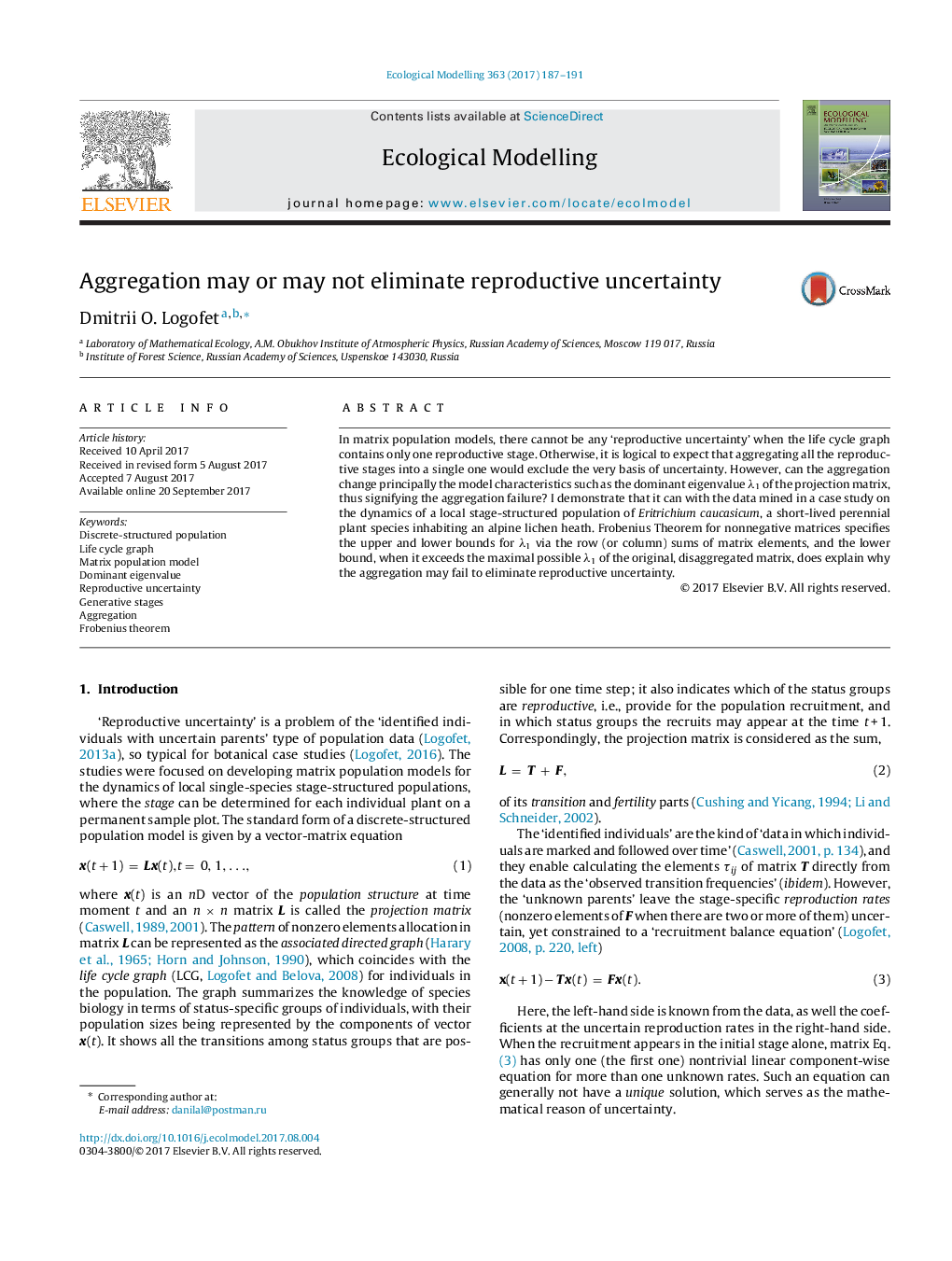| کد مقاله | کد نشریه | سال انتشار | مقاله انگلیسی | نسخه تمام متن |
|---|---|---|---|---|
| 5742022 | 1617384 | 2017 | 5 صفحه PDF | دانلود رایگان |
- Reproductive uncertainty in data leads to a certain range of λ1 values.
- Combining all the reproductive groups to a single one results in a single λ1 value.
- The question is whether λ1 of the aggregated matrix appears within the original range.
- Eritrichium caucasicum case study reveals that λ1 may get outside of the range.
- Frobenius theorem explains why the aggregation fails and suggests a condition to test.
In matrix population models, there cannot be any 'reproductive uncertainty' when the life cycle graph contains only one reproductive stage. Otherwise, it is logical to expect that aggregating all the reproductive stages into a single one would exclude the very basis of uncertainty. However, can the aggregation change principally the model characteristics such as the dominant eigenvalue λ1 of the projection matrix, thus signifying the aggregation failure? I demonstrate that it can with the data mined in a case study on the dynamics of a local stage-structured population of Eritrichium caucasicum, a short-lived perennial plant species inhabiting an alpine lichen heath. Frobenius Theorem for nonnegative matrices specifies the upper and lower bounds for λ1 via the row (or column) sums of matrix elements, and the lower bound, when it exceeds the maximal possible λ1 of the original, disaggregated matrix, does explain why the aggregation may fail to eliminate reproductive uncertainty.
Life Cycle Graph for a local population of Eritrichium caucasicum, a short-lived perennial inhabiting alpine heaths: j denotes young plants; v virginal plants and the adult non-flowering ones, g generative plants; gt terminally generative plants. Solid arrows indicate ontogenetic transitions occurring for one year; dashed arrows correspond to annual recruitment. Two reproductive stages, g and gt, undergo aggregation to a single one.176
Journal: Ecological Modelling - Volume 363, 10 November 2017, Pages 187-191
